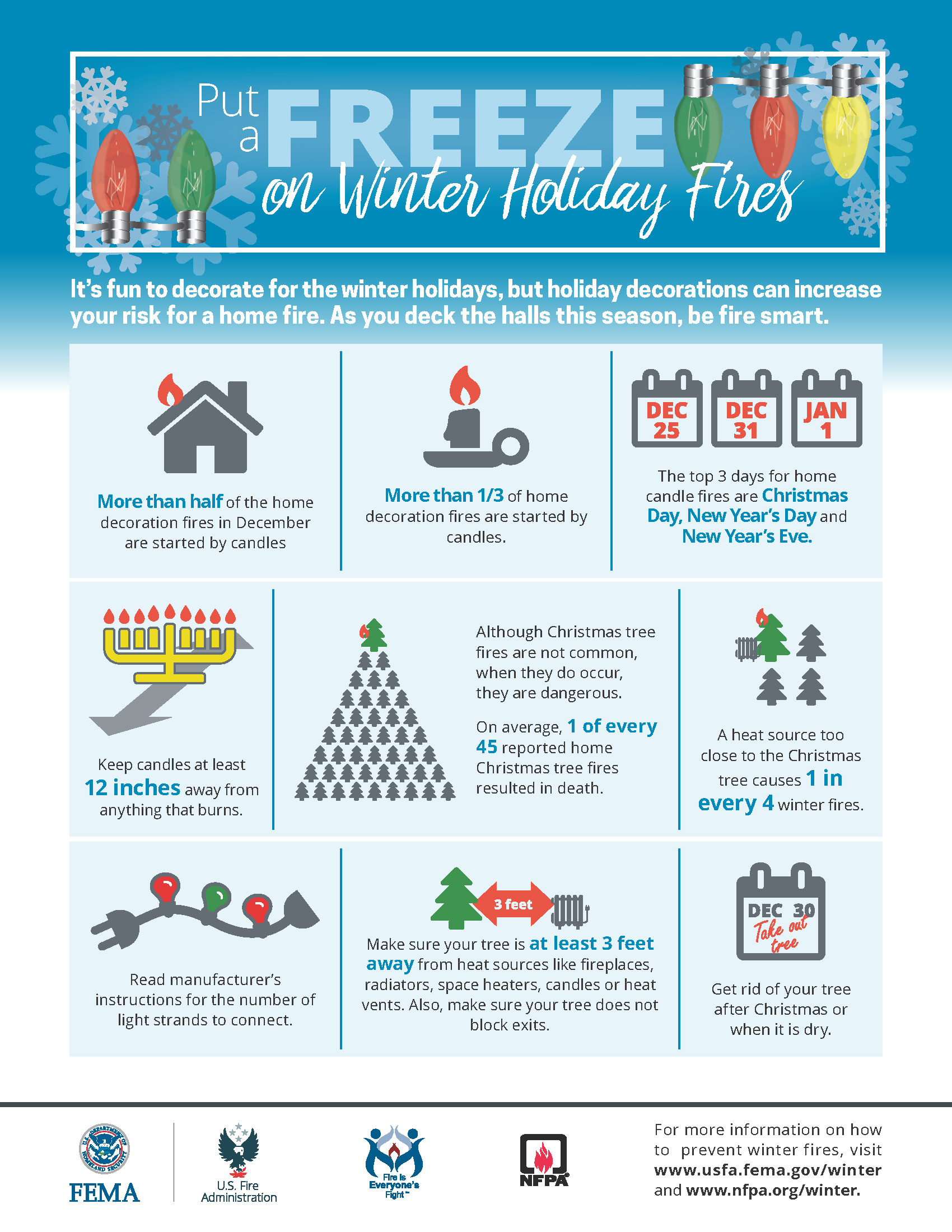QUINCY, Mass. – Festive meals, flickering lights and holiday decorations are all hallmarks of the holiday season. However, Christmas trees, candles, electrical decorations and cooking all contribute to an increased number of home fires during December, making it one of the leading months for U.S. home fires.
To help everyone enjoy a fire-safe holiday season, the National Fire Protection Association (NFPA) is encouraging everyone to be aware of potential fire risks, and to take steps to minimize them.
“Fire can quickly turn this festive time of year into a tragic one,” said Lorraine Carli, vice president of NFPA’s Outreach and Advocacy division. “Fortunately, when decorating your home and entertaining guests, following some simple safety precautions can go a long way toward enjoying a fire-safe holiday season.”
Following are NFPA’s holiday-related fire statistics:
- Christmas trees: Christmas tree fires are not common, but when they do occur, they’re much more likely to be deadly than most other fires. One of every 45 reported home Christmas tree fires results in a death, compared to an annual average of one death per 139 reported home fires. See more at www.youtube.com/watch?v=xr6b9b8FYKk.
- Candles: December is the peak time of year for home candle fires. In 2016, the top three days for candle fires were Christmas Day, New Year’s Day and New Year’s Eve. More than half (56 percent) of the December home decoration fires were started by candles, compared to one-third (31 percent) the remainder of the year.
- Holiday decorations: Between 2012 and 2016, U.S. fire departments responded to an average of 800 home fires per year that began with decorations (excluding Christmas trees). These fires caused an annual average of two civilian deaths, 34 civilian injuries and $11 million in direct property damage. One-fifth (19 percent) of these home decoration fires occurred in December. One-fifth (21 percent) of decoration fires started in the kitchen; 15 percent started in the living room, family room or den.
- Holiday cooking: While cooking fires are the leading cause of U.S. home fires and injuries year-round, Christmas Day ranked as the second-leading day for home cooking fires in 2016 (behind Thanksgiving Day.) On Christmas Day in 2016, there was a 73 percent increase in the number of home cooking fires as compared to an average day.
NFPA offers a wealth of holiday fire safety tips and information for consumers, along with tools and resources for local fire departments to promote holiday fire safety in their communities. Visit www.nfpa.org/holiday for more information.




















